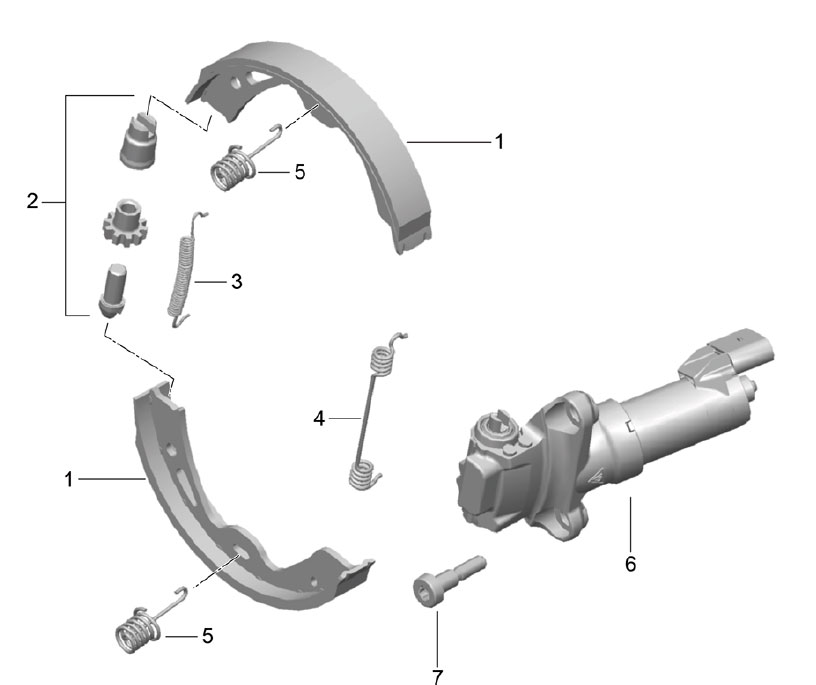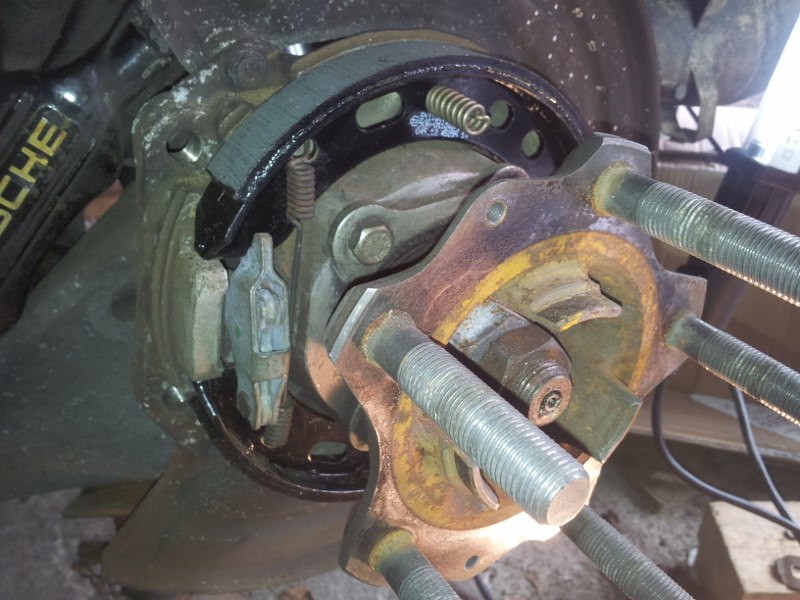Dear Laurence
Thanks for your reply. Difficult to know how best to respond.
Disconnecting the battery is a normal procedure, even in a Porsche. The owners handbook suggests it for any work on the the electrical system and gives guidance for its re-connection. How else might you change the battery? See for example the 981 BS owners handbook pp 195-97. I promise you it is not difficult procedure and the effects are not as alarming as you make out. Odd statements re 'Re-learning shift maps' are not very helpful. Similarly radio codes are not a problem in the current models.
You do appreciate that the 981/991 handbrake is a simple electro-mechanical system that operates through a separate small drum and shoe brake system built into the rear hub
and is independent of the hydraulically operated disk based brakes? You can even operate it as an emergency brake on the move, aka "J" turns, simply PUSH and let go! (it doesn't appear to lock on) - don't try this home folks. Disbelievers see owners handbook p118 and associated warning messages.
Back to the initial question re electric (NB not electronic) handbrake, disc/pad changes and PIWIS intervention - we appear to be no further forward.
I was however not suggesting disconnecting the battery to 'reset' the system but rather to obviate it throwing a fault when changing/moving pads by disconnecting the battery before you start. Which might be a good idea anyway to reduce the risk that the electric handbrake is not activated during the process. I suspect that a locked-on handbrake is more of a problem in this style of brake.
Does anyone else have a deeper/more helpful insights into this putative problem?
best wishes
FBR
PS see the ever helpful Richard Hamilton's guide to battery removal in the Cayman (why different forum is a mystery!) technical articles section (01/06/2013 http://www.porscheclubgbforum.com/tm.asp?m=770011 ). Is Richard Hamilton a secret Porsche mechanic/dealer hiding under the guise of an extremely helpful agricultural engineer?
Also note that there is another comfort for owners of older vehicles - the more recent Porsche models seem to require a new replacement battery (AGM) to be 'initialised in the control unit' by your friendly 'Porsche Partner' Its good to spread a little smugness to cheer up the greybeards now that winter is drawing in!!
It's not been the same since set of points, a spare condenser and a screw driver in the glovebox could get you from Manchester to Buxton and back and still have time for a tea dance at t'Winter Gardens! Provided that you remembered to kick over the reserve fuel valve when you topped up with five bobs worth of fuel at Macclesfield on the way back...
PPS
First tinkered with combined handbrake/disc on my DB 123 and it's still a fairly common car feature. Look on the rear disc of your Porsche and you can identify the mechanism, if you search about you'll find a small hole that gives access to the brake shoe adjuster.
Hope this helps...
posted this previously : http://www.porsche911.lt/files/981/E_981_KATALOG.pdf












